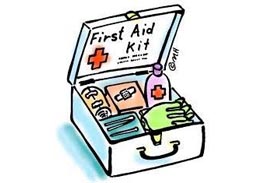Calcium part 1
 Recently, with all the mass marketing scares about calcium deficiencies, people have been questioning how to decide on which supplement to take. Considering that the calcium supplement market, until a short time ago, was limited to the health food industry at a few million dollars a year, the calcium supplement market has now grown to several hundred million dollars a year with the consumer being hammered every fifth TV commercial with the horrors of “osteoporosis”.
Recently, with all the mass marketing scares about calcium deficiencies, people have been questioning how to decide on which supplement to take. Considering that the calcium supplement market, until a short time ago, was limited to the health food industry at a few million dollars a year, the calcium supplement market has now grown to several hundred million dollars a year with the consumer being hammered every fifth TV commercial with the horrors of “osteoporosis”.
You can buy calcium in breakfast cereals, cold remedies, antacids and diet drinks. Is there no end in sight? Which of the hundreds of products on the market are safe? How do you understand the jargon on the labels? Some supplements, the ones in pill, tablet or liquid form are down right expensive.
If you have a good genetic track record of strong bones, lead an active physical life, eat natural foods from the basic four food groups, and AVOID soft drinks, junk foods, tobacco, alcohol excesses, stress, white sugars and flours you probably have little to worry about. However, if you are leading a contemporary lifestyle in the modern, fast paced world you might want to be concerned about calcium and other nutritional deficiencies; that like grains of sand in an hourglass, gradually slip away, grain by grain, until you look in the mirror and say: “Hey, who is that old person in there looking back at me?”
Grandma had her calcium supplement too. Her calcium was in the form of good old-fashioned soup stock made with soup bones. To make good soup go to your local meat market and talk to the master butcher. Ask him to cut some thick long bones into soup bones for you. The cost is very little. Soak the marrow filled bones in cold water and gradually bring them to a slow simmer, cooking until every vestige of flavor and nutrition is extracted. Calcium is best extracted with the addition of acid tomatoes which leach the calcium into the stock. Later add dark green vegetables, legumes, herbs and seasonings to taste for the healthiest soup in the country.
For years, the old standby of calcium supplements was food grade dolomite, bone meal or oyster shell tablets. They are still available (except dolomite for human consumption) at the lowest cost, and may be taken directly in the table form and/or sprinkled in agricultural grade powder form directly in the garden to grow healthy plants.
Dolomite is the most inexpensive and is mined from vast deposits in the earth laid down eons and eons ago when vast seas covered this planet. Life forms, plant and animal, adapted to the balance of calcium and magnesium in the dolomite limestone for countless ages, so that even today in human beings we require the natural two parts of calcium to one part magnesium for healthy body functions. It is interesting to note, although the deposits are still vast, and seas cover this planet to over 70%, dolomite is no longer being formed in the great seas to any extent.
The 2:1 ratio is important, for without magnesium you cannot absorb calcium. Magnesium in its own right serves other vital functions in the body. Yet today dolomite for people is no longer available-why? The answer I was given was lead. Well if it is lead is the world’s deposit why are we using it for growing food? I suspect that it was a way of the industry to market calcium, often no better than chalk, as a food supplement. It is all in the color of money; read on.
Bone meal, an old time favorite for the garden, met with some popularity as calcium supplement in food grade tablets, yet the higher concentrations of phosphorus in the bone substance is reported to reduce calcium absorption in the body. Some trace amounts of phosphorus are necessary for absorption, but again, very little. I prefer to use bone meal in the garden, where the plants have a higher need for phosphorus than I do. Oyster shell, (Calcium carbonate) also popular for the garden for many years, supplies calcium, yet lacks the magnesium balance. I think that many people look to oyster shell food grade tablets for trace minerals in addition to calcium. In the mean time provide your chickens with ground oyster shell; that is what they require as a self-choice to build eggshells.
Lastly, we might add that these two forms of calcium have an overall low percentage of absorption by the body, requiring larger amounts than the Recommended Daily Allowance to get the calcium into the body,
Of course I take one half RDA in the evening before bedtime, with a glass of milk, and the remainder is spread through the day in between meals. But, who wants to take this much time? Contemporary people look to faster results and fewer tablets. Let’s look at some other sources of calcium.
Chelated calcium boosts the absorption rate in the human body. Inorganic mineral salts are bound with calcium that is chelated. Examples of inorganic calcium are: calcium carbonate, calcium sulfate and calcium phosphate. The mineral calcium is blended with sulfonic acid to make calcium sulfate. Carbonic acid is blended with calcium to make calcium carbonate. The last of this partial list of chelated calcium is calcium phosphate, which comes from phosphoric acid and calcium. Chelated calcium increases the absorption rate to about 10% for quicker results.
Calcium carbonate is the most common supplement on the market and is sold mostly as an antacid. It is often sold under the brand names: Calcet: Cal-Sup; Mission Prenatal; OsCal 250, Prenate 90, and others. Calcium carbonate decreases the absorption of magnesium. The consumption of more than two grams a day for a prolonged period of time may produce symptoms of appetite loss, nausea, headache and weakness due to phosphate deficiency. Calcium deposits may develop in the eye and impair vision. Elderly with kidney problems are especially vulnerable.
Calcium carbonate is often blended with other forms of calcium: lactate and gluconate. Calcium carbonate is a potent drug and malnutrition may result over a protracted period of time with excessive self-medication. Antacids may be dangerous to your nutritional health. Constipation is not uncommon and in rare cases, malabsorption of fat may occur. Avoid taking calcium carbonate with fatty foods, fruit juices, sodas, caffeine beverages, wine and chocolates.
Next week we will continue our look at calcium and calcium supplements.
God Bless
Copyright: 2009, Back2theLand.com, Mark Steel



